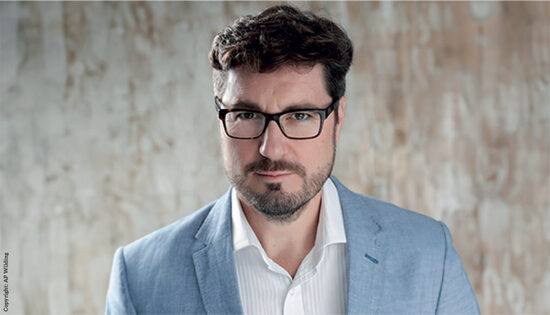Indeed, a market pricing model does sound intrinsically appealing – it’s how we price equities and bonds. Why not life settlements?
Some of those promoting funds that use this new methodology have couched comparisons in terms of new generation versus old generation. As someone unashamedly old generation on this score, I cannot help being reminded of the late US President, Ronald Reagan.
In the 1984 Presidential election campaign, faced by the much younger Democrat candidate Walter Mondale, Reagan was asked whether his advanced years were an impediment to doing his job effectively.
He replied that his age posed no disability and then quickly demonstrated as much with the immortal lines: “I want you to know also that I will not make age an issue of this campaign. I am not going to exploit, for political purposes, my opponent’s youth and inexperience.”
The EEA Life Settlements Fund uses a mark-to-model system to value the fund and it has served it well for six years. There are no plans to move to a mark-to-market approach.
With some $4bn of policies estimated to have been traded in 2010/11, life settlements have become a significant asset class – but not a highly liquid one. The market forces of supply and demand are still not sufficient to guarantee that fair value will be reflected by a mark-to-market system.
A life settlements fund manager that recently switched its fund from mark-to-model to mark-to-market valuation itself underlined the problem when it noted two investment banks were the biggest brokers in the sector and to a large extent constituted ‘the market’.
In effect, this provider appeared to be saying it was basing its fund valuations on the prices of secondary life policies bought and sold by only two investment banks, desregarding the fact that not all policy transactions involve these institutions – there are many others conducted by specialist brokers whose pricing could be taken into consideration when determining valuations.
It is common sense that a market that does not include all participants and is based largely on the rulings of two buyers is not necessarily the most efficient and effective.
In short, the components required for an effective life settlements market are not yet in place.
Of course, few would claim mark-to-model is perfect. These models are based on the remaining life expectancy of the policies held, the sum assured and the premiums outstanding if the policy matures as expected.
Most life settlements funds use an actuarial model to value policies at purchase, and everyone knows actuarial models keep changing because people keep living longer.
This has important implications that go beyond pricing and touch more generally upon the ‘old versus young’ issue. According to Conning Research, the average life expectancy of a policy at purchase is more than seven years (84 months). This means with a new fund it will be several years before you can tell if the model on which the fund is built is working – regardless of whether it is priced on a mark-to-market or a mark-to-model basis.
So investors need to be extremely confident in the manager to recommend new funds early in their life.
Newer funds can also be much more reliant on deposits for liquidity. Older funds are more likely to have a flow of policy maturities, generating cash into the fund.
This was hugely influential in shaping the way the EEA Life Settlements Fund was constructed at launch six year years ago. To help reduce the actuarial risk it was decided that policies would be medically re-underwritten, assessing life expectancy (LE) using two independent medical experts (and for prudent valuation purposes adding 12 months to the LE). A team of nurses was employed to monitor the health and medical condition of the individuals insured and to alert the manager to any marked changes in life expectancies.
In addition, EEA chose to focus on policies with shorter life expectancies. The average LE of policies purchased is currently just 51 months; and, because the fund has been around for six years, the average LE of policies held across the whole portfolio is just 28 months.
A focus on shorter LEs offers much earlier evidence of whether the model used to value policies at purchase has worked. It also supports liquidity, because policy maturities come earlier – generating cash flow into the fund. To date, 231 policies have matured, generating $304m into the fund.
So consider carefully the issue of mark-to-market before making a choice on which fund you buy. Look closely at the model used to value a traditionally priced fund. And think of new generation versus old generation in a much wider context. With age and success comes size, and that enables diversification – the EEA Life Settlements Fund holds more than 700 policies from nearly 90 insurers.
There are various key questions you should ask life settlements fund managers. How are longevity and liquidity risks managed? Do they use an actuarial model? Do they medically re-underwrite? Is there a sufficient cash buffer to help reduce the impact of sudden redemptions or to buy time for a manager to achieve a better price for any policies that have to be sold? It is also important to look at the history of the key individuals behind the fund.
And finally, if a fund is so-called ‘new generation’ or mark-to-market – or perhaps both – it might be worth asking yourself whether it is youth or experience (and a track record) that you trust most.
Let’s not forget, it was Reagan who won the 1984 election – by a landslide.








